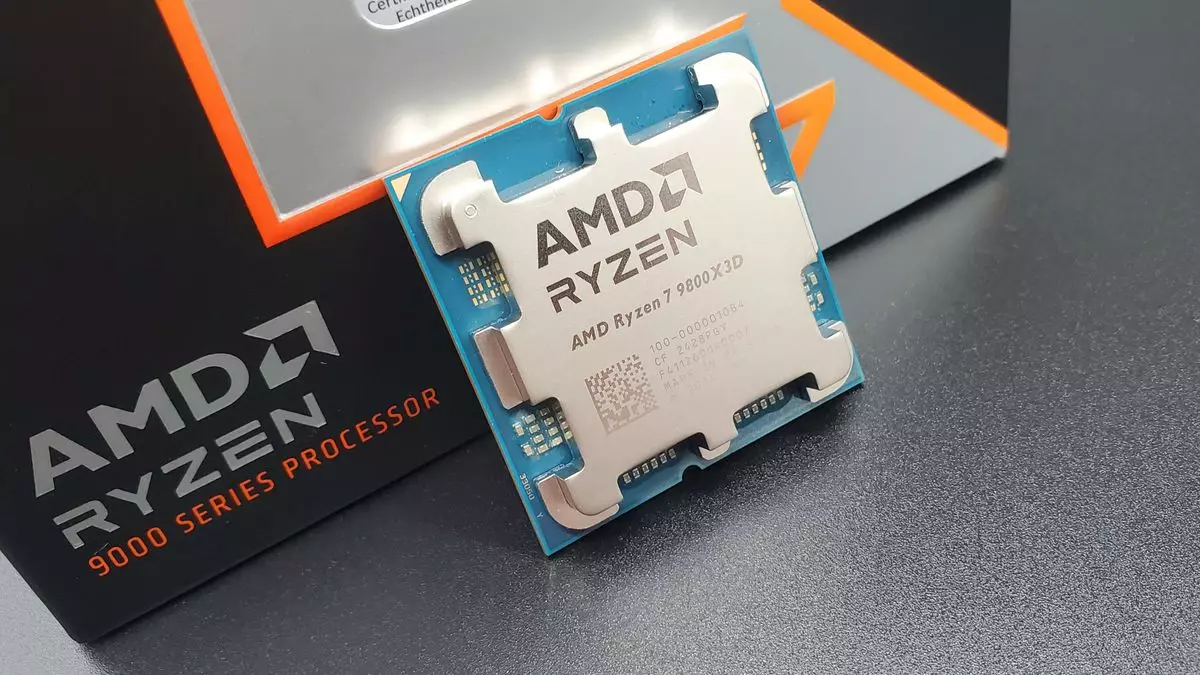The world of personal computing has witnessed a seismic shift in recent months, characterized by fresh launches of CPUs from both AMD and Intel. Amid the buzz surrounding Nvidia’s release of new graphics cards and AMD’s upcoming models, the spotlight has also shone on the latest offerings from these two giants in the CPU arena. While Nvidia garners excitement for its latest graphics technology, the narrative surrounding AMD’s newly minted 9000-series ‘Zen 5’ processors and Intel’s Core Ultra 200S ‘Arrow Lake’ lineup reveals an intricate balance of market forces affecting supply and demand.
AMD has recently made headlines following its Q4 2024 earnings call, led by CEO Dr. Lisa Su. The company reported a significant uptick in sales, claiming it achieved its highest sell-out numbers in years during the critical holiday shopping season, coinciding with the launch of its gaming CPUs. Dr. Su emphasized that AMD saw “very strong adoption” of its products, reflecting a positive sentiment among consumers eager to upgrade their gaming rigs. However, this euphoria is tempered by a notable scarcity in stock, particularly for the Ryzen 7 9800X3D model.
Limited availability often serves as a double-edged sword; it can be indicative of either overwhelming demand or an inability to meet that demand due to supply constraints. This phenomenon is not new, especially in the context of AMD’s recent hardware launches. While high sales figures are promising, they also prompt scrutiny regarding AMD’s production capacity and ability to sustain momentum in the face of overwhelming enthusiasm from consumers.
Conversely, Intel’s latest offerings have been greeted with a relatively lukewarm reception. The Core Ultra 200S ‘Arrow Lake’ series, promoted as a significant advancement, has not quite lived up to expectations. Users have reported instability issues with many of Intel’s 13th and 14th Gen processors, leading to dissatisfaction among tech enthusiasts and gamers alike. Moreover, this challenge presents an opportunity for AMD, especially considering the latter’s Ryzen 7 9800X3D widely regarded as a top-tier gaming CPU.
Intel’s struggles in the CPU market are particularly salient as the company faces intensifying competition. With AMD’s superior performance crowned by its latest releases, consumers have more reason to favor AMD’s processors. The landscape has dramatically shifted to AMD’s favor as customers weigh performance against promises: AMD delivers, while Intel contends with questions about reliability and next-generation innovation.
The Mobile Market: A Niche Yet Dominant Presence
In addition to desktop CPUs, the competition between AMD and Intel extends to the mobile market, where both companies are making strides. AMD’s new AI 300 ‘Strix Point’ processors have captured attention not only in laptops but also in handheld devices, signifying a diverse application spectrum. The OneXPlayer OneXFly F1 Pro is one shining example, showcasing AMD’s capabilities in the mobile realm.
Intel, too, is vying for dominance with its Core Ultra 200V ‘Lunar Lake’ mobile processors, which have made their way into devices such as the MSI Claw 8 AI+. While Lunar Lake processors excel in efficiency, they have been criticized for their gaming performance compared to AMD’s Strix Point chips.
The mobile segment presents a unique battleground, where efficiency, performance, and versatility must align to attract the tech-savvy consumer. As portable gaming continues to rise in popularity, the competition promises exciting innovations from both companies, making it an area to watch closely.
Looking Ahead: Challenges and Opportunities
As AMD and Intel navigate through this fiercely competitive landscape, the implications for consumers are extensive. The momentum behind AMD’s gaming CPUs is palpable, but it is crucial for the company to translate that demand into steady stock levels to fulfill consumer desires. Frequent experiences of ‘out of stock’ notifications serve as a limitation, and the company faces pressure to ramp up production.
Intel’s challenge will be to address its recent shortcomings effectively, focusing on instilling confidence in its next-generation processors while enhancing the overall user experience. As the two companies navigate seasonal trends and market behaviors, the battle for the CPU market crown will intensify.
The past months have rendered a complex but fascinating narrative in the CPU market. AMD appears to be riding a wave of success, backed by its formidable new releases, while Intel grapples with performance issues that stymie its efforts to reclaim momentum. What lies ahead remains to be seen, but one reality is certain: the fierce rivalry between these two titans will continue to shape the computing landscape for consumers across the globe.


Leave a Reply